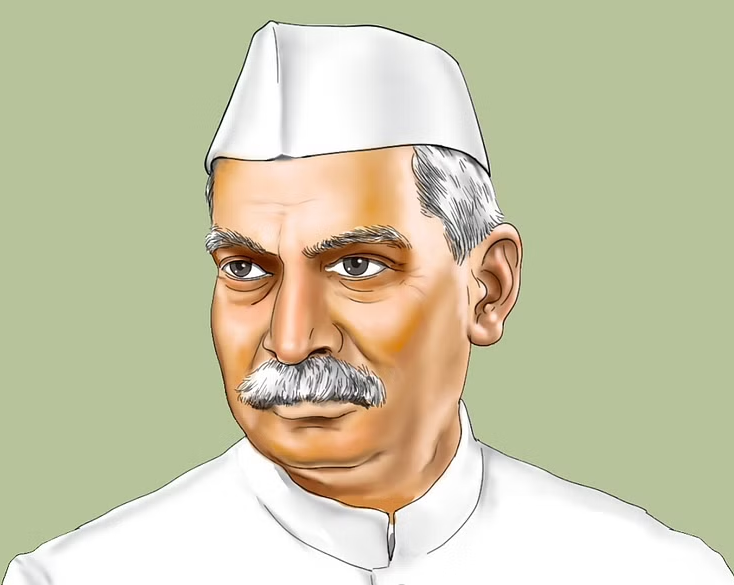Important Facts For Prelims
Dr. Rajendra Prasad
- 05 Dec 2022
- 5 min read
Why in News?
The President of India paid floral tributes to Dr. Rajendra Prasad, the First President of India, on his birth anniversary at Rashtrapati Bhavan on 3rd December 2022.
Who was Dr. Rajendra Prasad?
- Birth:
- Son of Mahadev Sahai, he was born in Zeradei, Siwan, Bihar on 3rd December 1884.
- Education:
- He joined the famed Calcutta Presidency College in 1902.
- In 1915, Prasad appeared in the examination of master's in law from the Department of Law, University of Calcutta, passed the examination and won a gold medal.
- In 1916, he commenced his legal career in the Patna High Court. He completed his Doctorate in Law from Allahabad University in 1937.
- Role in Fight for Freedom:
- Association with Gandhiji:
- While Gandhiji was on a fact-finding mission in Chamaparan district of Bihar to address grievances of local peasants, he called on Dr. Rajendra Prasad to come to Champaran with volunteers.
- Gandhiji’s influence greatly altered many of his views, most importantly on caste and untouchability.
- The Champaran Satyagraha not only brought him closer to Mahatma Gandhi, but also changed the entire course of his life.
- The Rowlatt Act of 1918 and the Jallianwala Bagh massacre of 1919 pushed Rajendra Prasad closer to Gandhiji.
- While Gandhiji was on a fact-finding mission in Chamaparan district of Bihar to address grievances of local peasants, he called on Dr. Rajendra Prasad to come to Champaran with volunteers.
- Call for Non-cooperation:
- Dr. Prasad called for non-cooperation in Bihar as part of Gandhiji’s non-cooperation movement.
- National College:
- He gave up his law practice and started a National College near Patna, 1921.
- Salt Satyagraha:
- In March 1930, Gandhiji launched the Salt Satyagraha. Under the guidance of Dr. Prasad, a salt Satyagraha was launched in Nakhas Pond, Bihar.
- Batch after batch of volunteers courted arrest while making salt. He called for more volunteers.
- Public opinion forced the Government to withdraw the police and allow the volunteers to make salt.
- He then sold the manufactured salt to raise funds. He was sentenced to six months imprisonment.
- In March 1930, Gandhiji launched the Salt Satyagraha. Under the guidance of Dr. Prasad, a salt Satyagraha was launched in Nakhas Pond, Bihar.
- Association with Gandhiji:
- Dr. Prasad & Indian National Congress:
- He officially joined the Indian National Congress in 1911, during its annual session held in Calcutta.
- He presided over the Bombay session of the Indian National Congress in October 1934.
- Following the resignation of Subhash Chandra Bose as the President of the Congress in April 1939, He was elected President for the second time.
- In 1946, he joined the Interim Government of Pandit Jawaharlal Nehru as the Minister of Food & Agriculture and gave the slogan of “Grow More Food”.
- Dr. Prasad & Constituent Assembly:
- In July 1946, when the Constituent Assembly was established to frame the Constitution of India, he was elected its President.
- Committees of Constituent Assembly under the chairmanship of Dr. Prasad includes:
- Ad hoc Committee on the National flag
- Committee on the Rules of Procedure
- Finance and Staff Committee
- Steering Committee
- Two and a half years after independence, on 26th January 1950, the Constitution of independent India was ratified and he was elected India's First President.
- Awards & Recognition:
- In 1962, after 12 years as President, Dr. Prasad retired, and was subsequently awarded the Bharat Ratna, the nation’s highest civilian award.
- Dr. Prasad recorded his life and the decades before independence in manycbooks, which includes:
- Satyagraha at Champaran
- India Divided
- His autobiography “Atmakatha”
- Mahatma Gandhi and Bihar, Some Reminisences
- Bapu ke Kadmon Mein
- Death:
- Dr. Rajendra Prasad spent the last few months of his life in retirement at the Sadaqat Ashram in Patna.
- He died on 28th February 1963.







